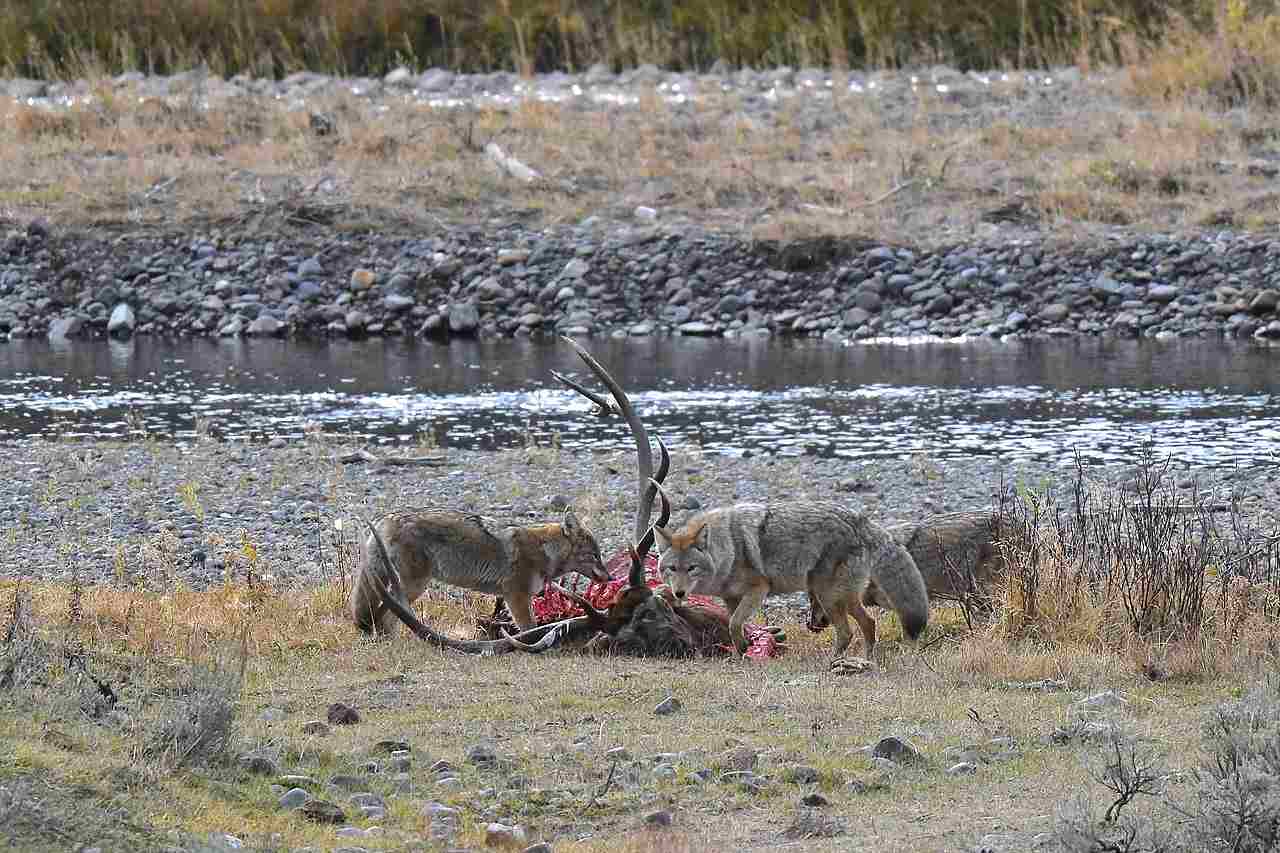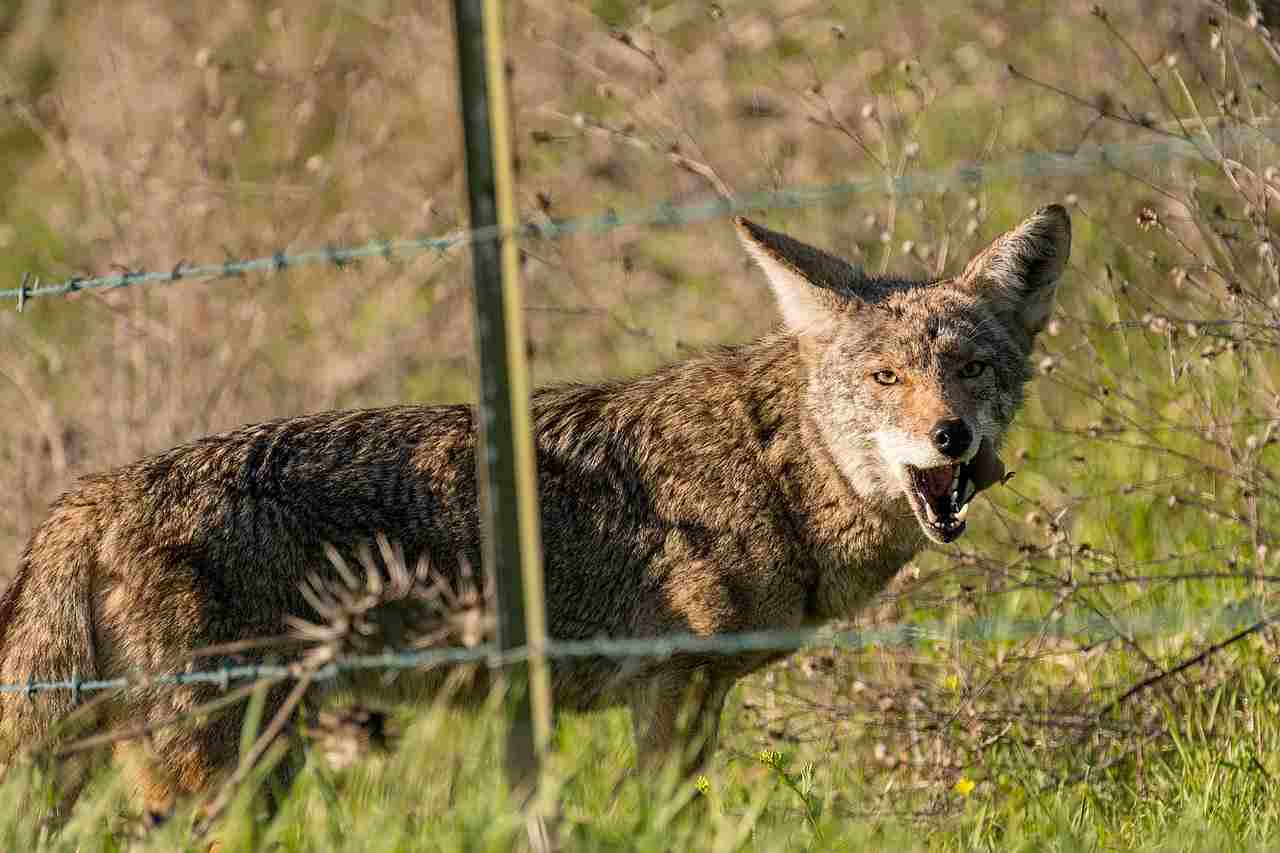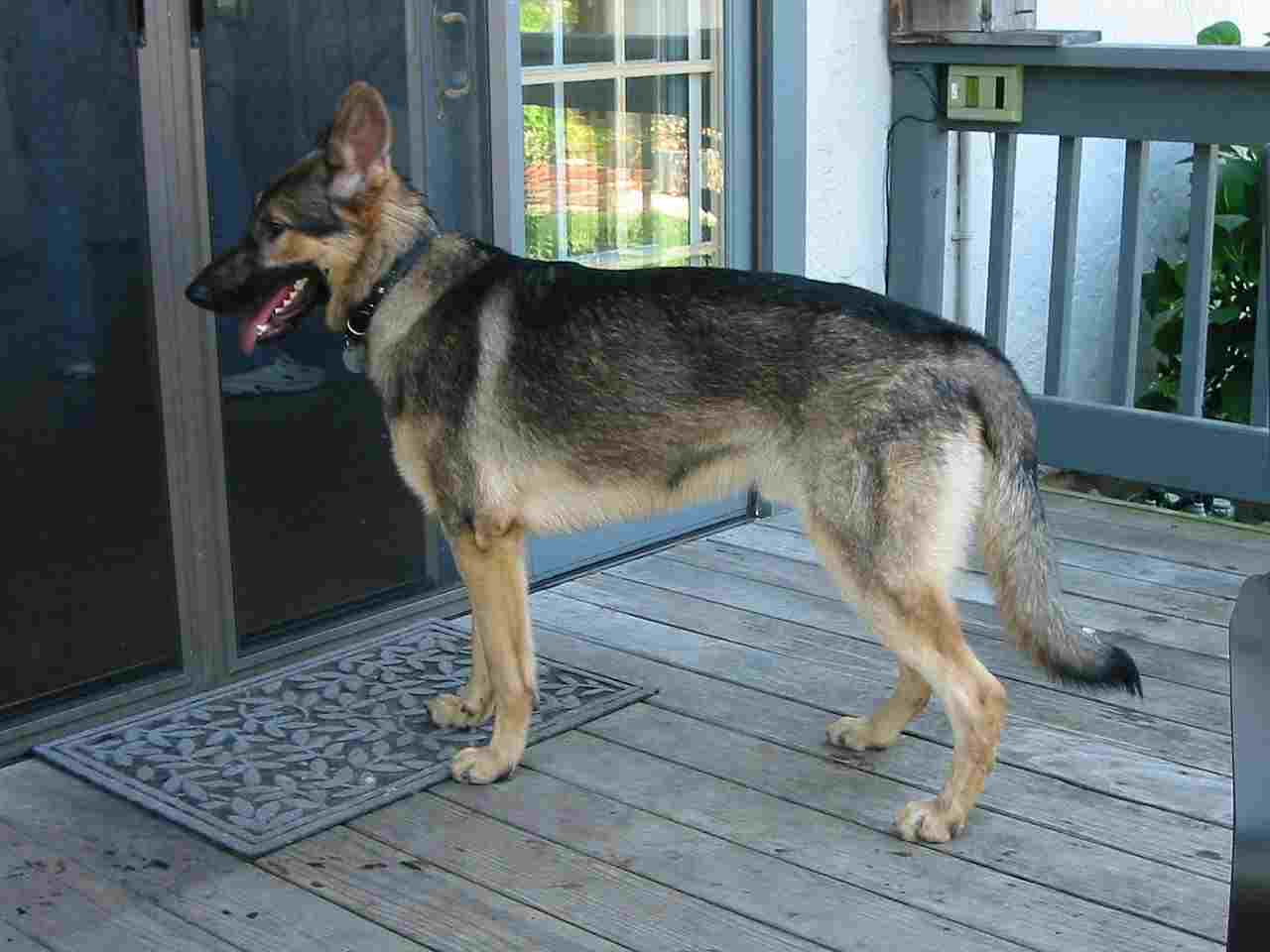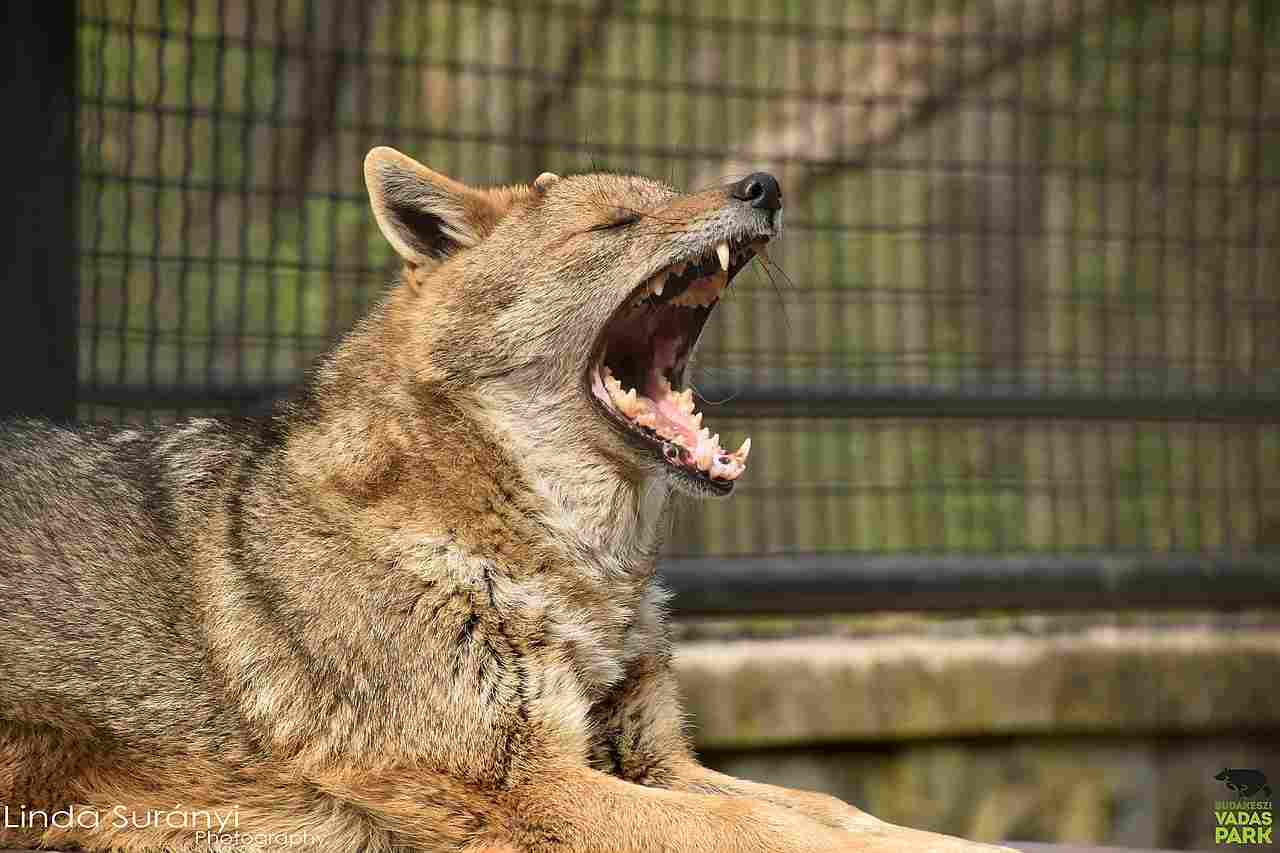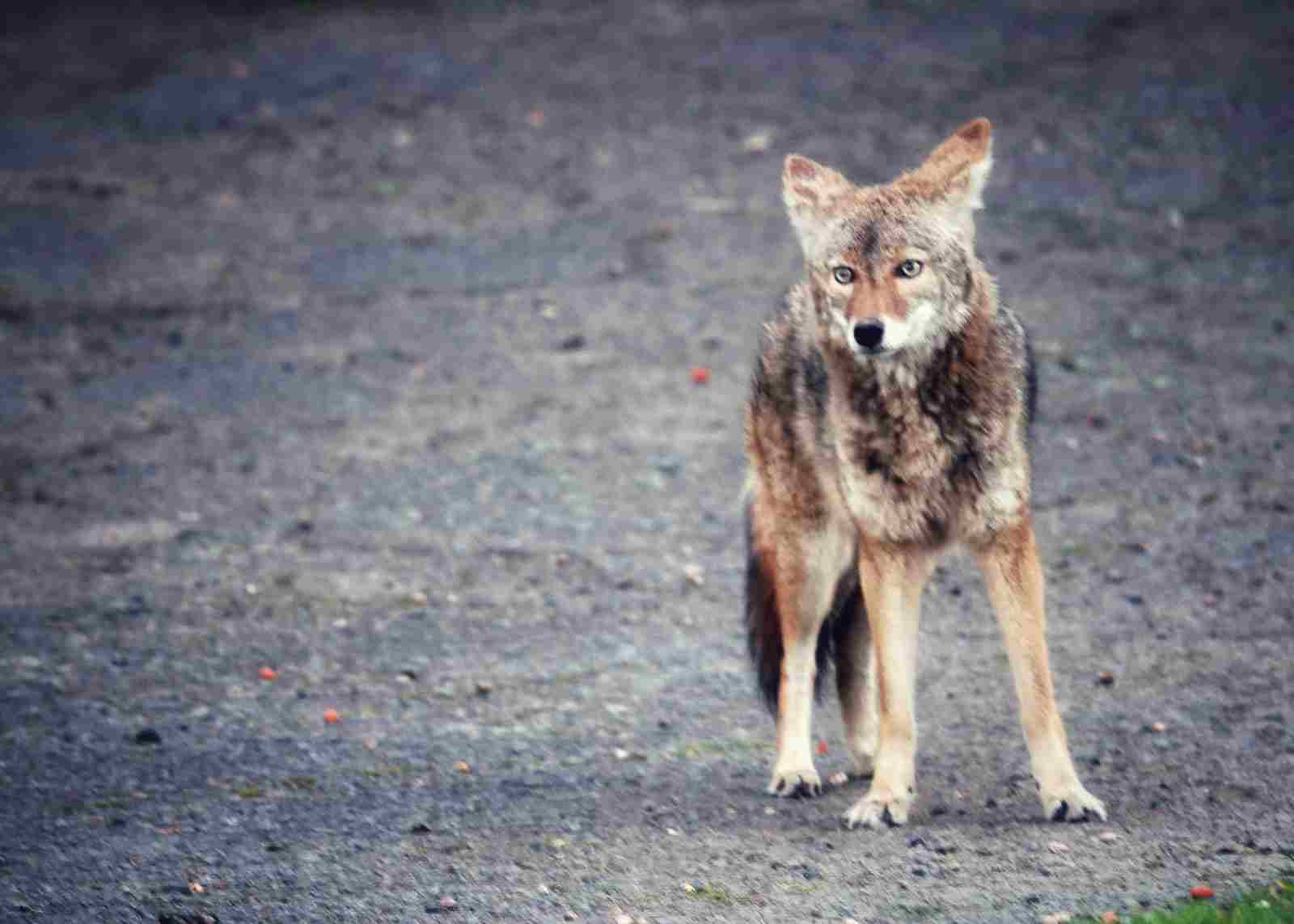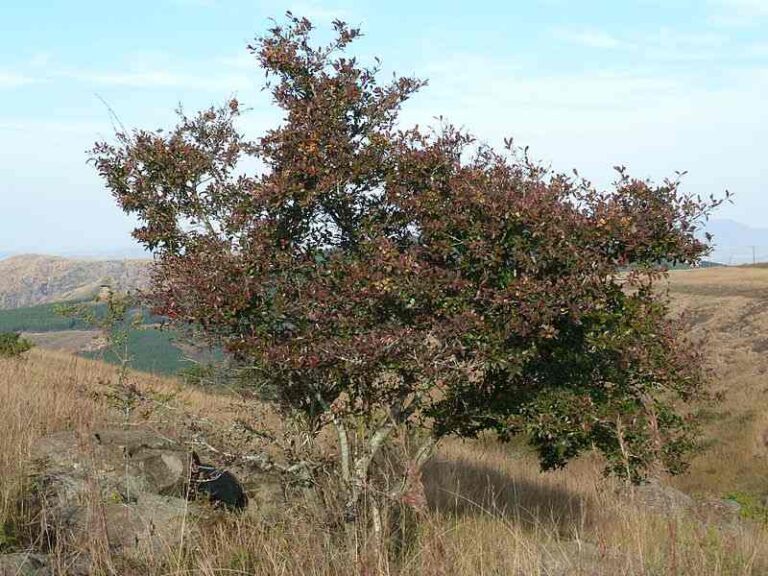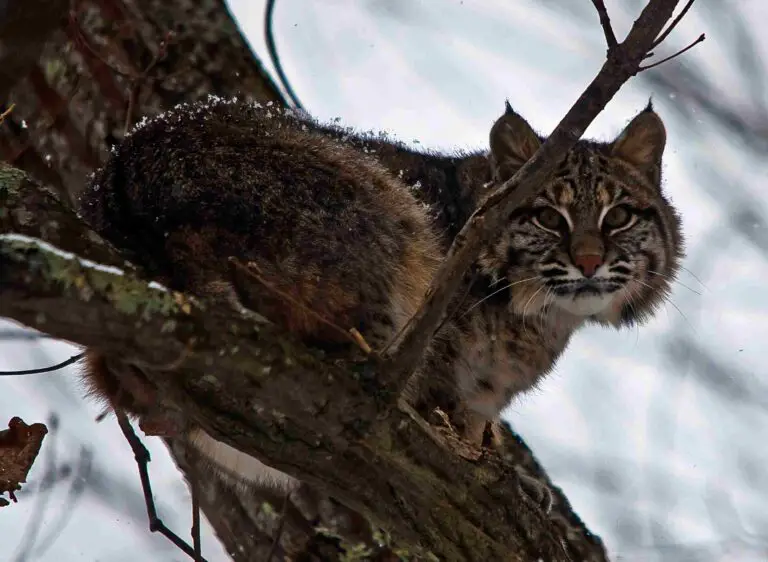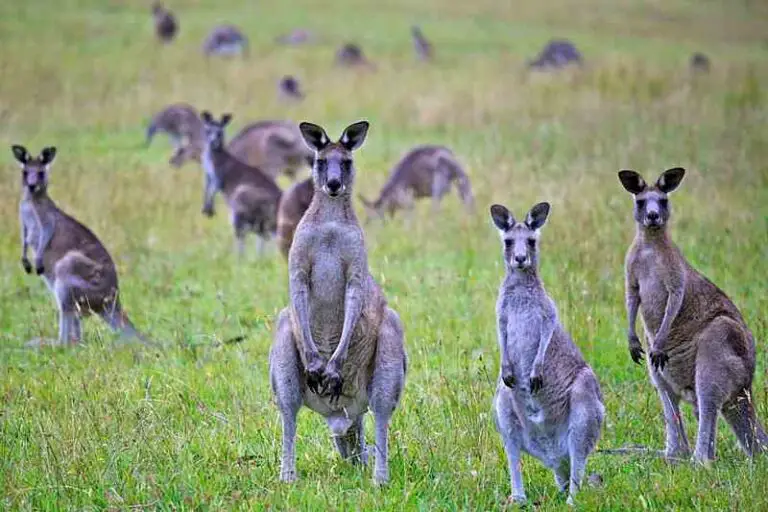Coyote Vs Dingo Size, Weight, Overall Comparison
Coyotes and dingoes, both members of the canid family, present a captivating interplay of biological and physical characteristics. As wild canines, they navigate diverse habitats, each showcasing unique traits that distinguish them within the canid lineage.
This comparative analysis explores various factors, including taxonomy, appearance, size, weight, bite force, physical offensive and defensive advantages, speed, agility, overall physical capacity, habitat preferences, lifespan, feeding habits, social behavior, reproduction methods, parental behavior, proximity to human-inhabited areas, behavior toward humans, danger posed to humans, associated precautions, and conservation status. The focal point of this exploration is a scrutiny of the potential outcome in a physical confrontation between a coyote and a dingo.
Coyote vs Dingo: Who Will Win in a Fight/Physical Confrontation?
1). Size, Weight, and Strength Advantage:
– Coyotes, being larger, heavier, and possessing greater strength, hold a distinct advantage in a one-on-one physical confrontation with dingoes. This superior size and strength contribute significantly to the coyote’s dominance in such encounters.
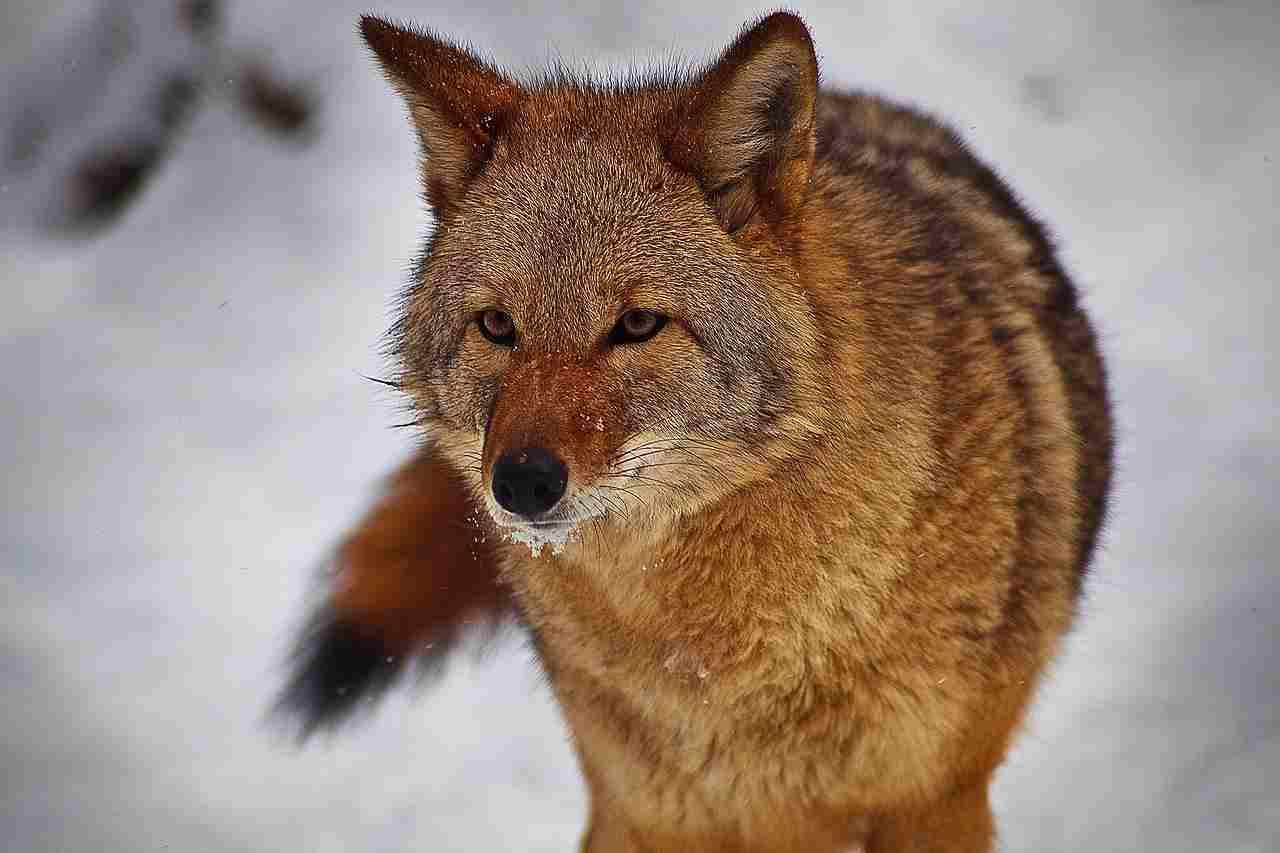
2). Additional Strength Advantage:
– Building upon their larger size and weight, coyotes demonstrate heightened strength in comparison to dingoes. This additional strength further solidifies the coyote’s capability to overpower their dingo counterparts in a confrontational scenario.
While dingoes and coyotes share common ancestry, the variations in size and strength play a pivotal role in determining the outcome of a direct physical encounter.
*Details of Comparison
| Criteria | Coyote | Dingo |
| Taxonomy | Canis latrans |
Canis lupus dingo
|
| Appearance | Varied fur, slender build |
Diverse coat colors, robust build
|
| Size | 32-37 inches (length) |
3.3-3.6 feet (length)
|
| Weight | 20-50 pounds | 22-33 pounds |
| Bite Force | Moderate, not extensively studied |
Estimated strong bite force
|
| Offensive Advantages | Agile, hunting strategies |
Stamina, cooperative hunting
|
| Defensive Advantages | Agility, climbing ability |
Agility, territorial behavior
|
| Speed | Up to 40 mph | 25-30 mph |
| Agility | Highly agile, climbing ability |
Agile, strong jumping ability
|
| Overall Physical Capacity | Versatile, adaptable |
Well-adapted, excellent endurance
|
| Habitat Preference(s) | Adaptable, urban areas |
Native to Australia, varied ecosystems
|
| Tracks | Oval-shaped, slender | Broader, robust |
| Lifespan | 10-14 years | 4-14 years |
| Feeding | Omnivorous, opportunistic |
Predominantly carnivorous
|
| Social Behavior | Solitary and social |
Primarily pack-oriented
|
| Reproduction | Late winter breeding |
Variable breeding season, gestation around 63 days
|
| Parental Behavior | Cooperative care, family groups |
Cooperative care within the pack
|
| Proximity to Humans | Adaptable to urban areas |
Traditionally avoided, adapting in some areas
|
| Behavior Toward Humans | Wary, occasional aggression |
Shy, rare instances of aggression
|
| Danger Posed to Humans | Rare threat, occasional conflicts |
Rare instances of aggression, caution advised
|
| Precautions | Responsible waste management, coexistence education |
Discourage approach, camping awareness
|
| Conservation Status | Least Concern (Coyote), Varies (Dingo) |
Vulnerable in some regions, hybridization concerns
|
| Conclusion | Shared family (Canidae), adaptability |
Differences in distribution, size, and behavior
|
Key Points:
- Both species, belonging to the Canidae family, exhibit adaptability to diverse environments.
- Coyotes are more adaptable to urban areas, while dingoes are native to Australia with a focus on varied ecosystems.
- Dingoes are generally larger and exhibit a more robust build compared to the slender appearance of coyotes.
- Coyotes have broader distribution, including North America, while dingoes are confined to Australia.
- Dingoes show a more consistent pack-oriented social structure, while coyotes display both solitary and social behaviors.
- Conservation status varies; coyotes are least concern, while some dingo populations face vulnerability, influenced by hybridization and habitat changes.
1. Taxonomy:
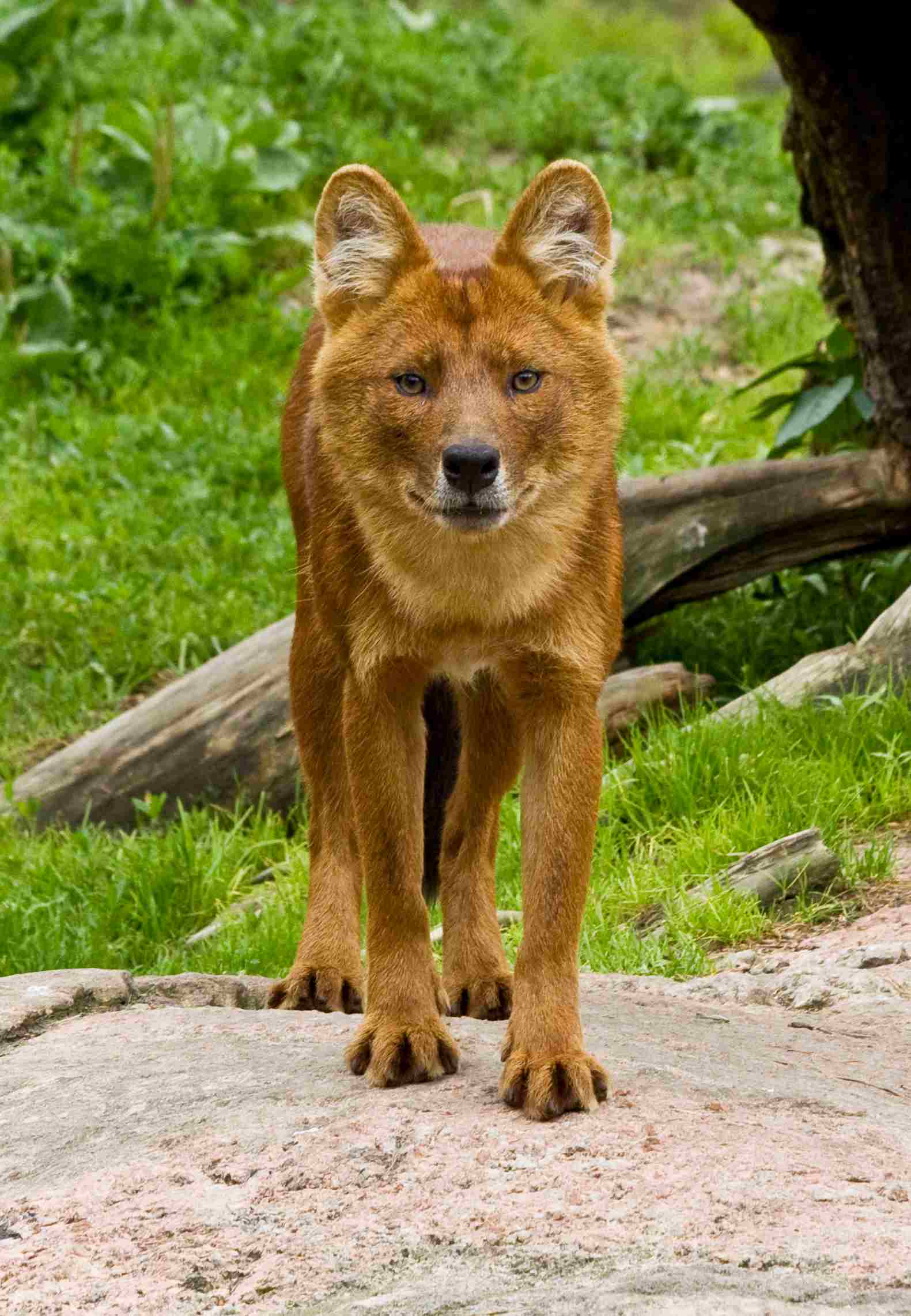
Coyote (Canis latrans):
Kingdom: Animalia
Phylum: Chordata
Class: Mammalia
Order: Carnivora
Family: Canidae
Genus: Canis
Species: latrans
Dingo (Canis lupus dingo):
Kingdom: Animalia
Phylum: Chordata
Class: Mammalia
Order: Carnivora
Family: Canidae
Genus: Canis
Species: lupus dingo
2. Appearance:
Coyote:
Fur coloration varies, often gray or reddish-brown
Bushy tail, often held low
Pointed ears
Slender build
Dingo:
Coat colors include sandy to reddish-brown or black and tan
Bushy tail, often held high
Broad head with erect, pointed ears
Robust build
Comparison:
Both have fur adaptations for their respective environments.
Coyotes generally exhibit a more slender appearance compared to dingoes.
Ecological Implications:
The different coat colors and builds may indicate adaptation to their specific habitats.
Their appearances may influence predation success and prey perception in their ecosystems.
3. Size:
Coyote:
Length: 32-37 inches (81-94 cm)
Height: 20-22 inches (51-56 cm) at the shoulder
Dingo:
Length: 3.3-3.6 feet (1-1.1 meters)
Height: Around 23 inches (58 cm) at the shoulder
Comparison:
Dingoes are generally larger in terms of length compared to coyotes.
Coyotes and dingoes have a similar shoulder height, but dingoes can appear more robust.
4. Weight:
Coyote:
Typically 20-50 pounds (9-23 kg)
Dingo:
Weight ranges from 22 to 33 pounds (10-15 kg)
Comparison:
Dingoes and coyotes have a comparable weight range, with dingoes often being slightly heavier.
5. Bite Force:
Coyote:
Bite force not extensively studied but considered moderate
Dingo:
Limited studies, estimated to have a strong bite force
Comparison:
Dingoes are believed to have a potentially stronger bite force compared to coyotes, but specific data is scarce.
Ecological Implications:
Size and bite force contribute to their ecological roles as predators, influencing prey selection and hunting strategies in their respective ecosystems.
6. Physical Offensive Advantages:
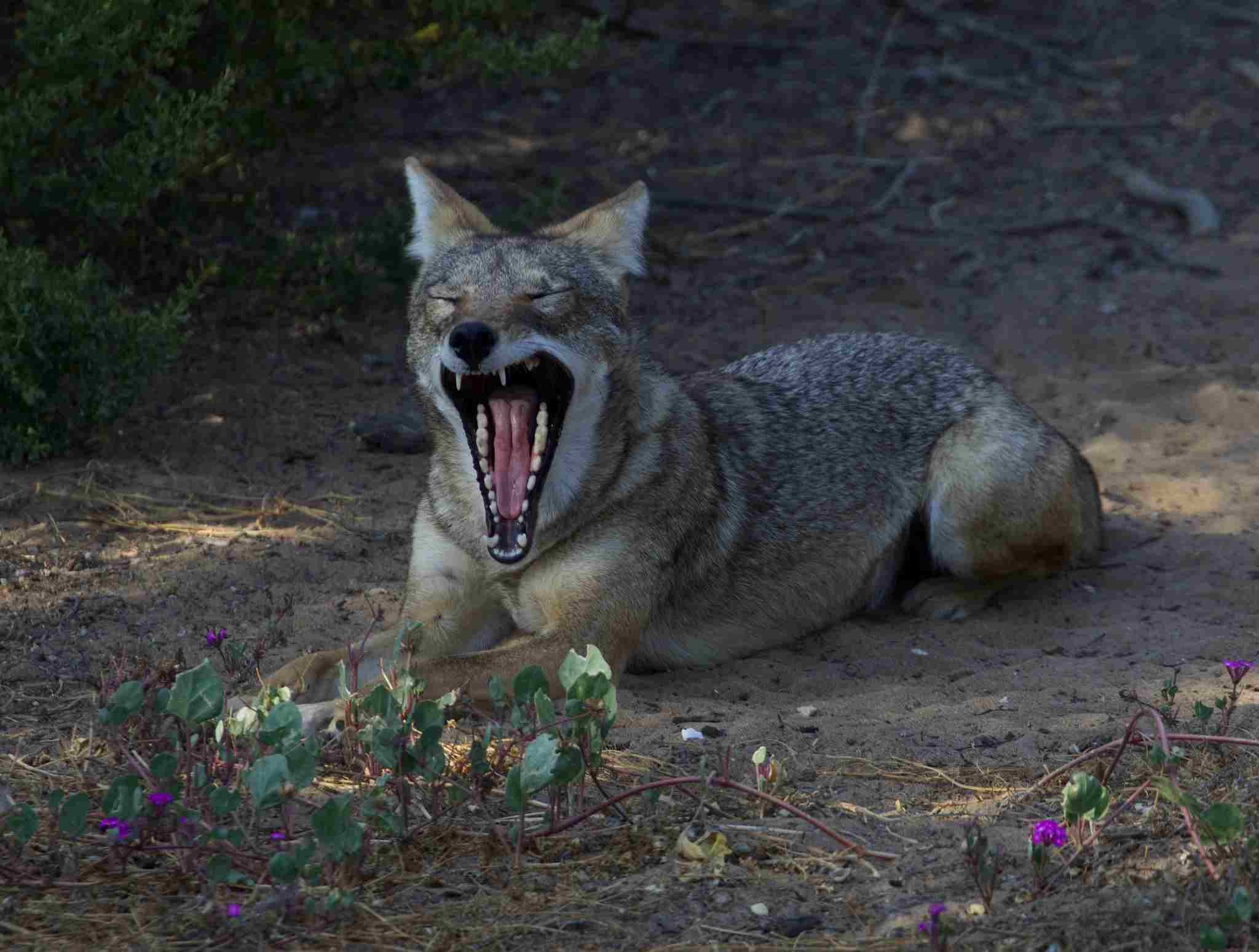
Coyote:
Sharp teeth and strong jaws for hunting small to medium-sized prey
Adaptability in hunting strategies, including cooperation in packs
Quick and agile movements
Dingo:
Sharp teeth and strong jaws adapted for hunting various prey
Excellent stamina for chasing down prey
Cooperative hunting behaviors in packs
Comparison:
Both have effective physical attributes for hunting, with coyotes adapting to a wide range of prey and dingoes showcasing stamina in pursuit.
7. Physical Defensive Advantages:
Coyote:
Agility and speed for evading predators
Camouflage fur for concealment
Ability to climb and escape to higher ground
Dingo:
Agility and speed for evading predators
Camouflage fur for concealment
Strong territorial behavior as a defense mechanism
Comparison:
Similar defensive strategies are observed in both species, emphasizing agility and speed.
8. Speed:
Coyote:
Can reach speeds up to 40 mph (64 km/h)
Dingo:
Capable of reaching speeds around 25-30 mph (40-48 km/h)
Comparison:
Coyotes generally exhibit higher maximum speeds compared to dingoes, potentially influencing their hunting and escape capabilities.
Ecological Implications:
The offensive and defensive advantages contribute to their roles in maintaining ecological balance, affecting prey populations and interactions with other species in their ecosystems.
9. Agility:
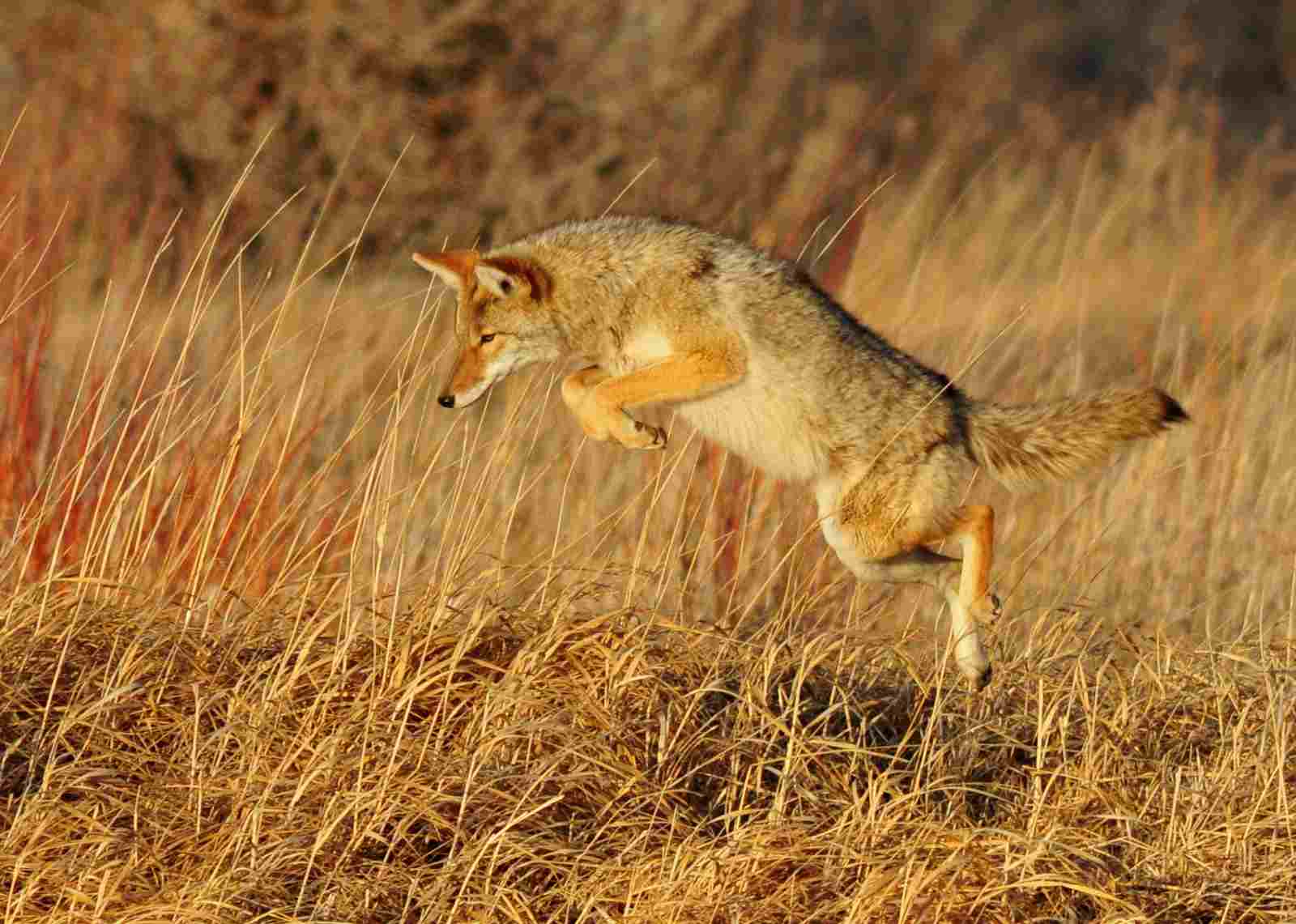
Coyote:
Highly agile, capable of quick and sharp movements
Agile climbing ability, enabling access to varied terrain
Dingo:
Agile and nimble, adept at navigating diverse landscapes
Strong jumping ability, aiding in hunting and territorial displays
Comparison:
Both coyotes and dingoes display remarkable agility, adapting to their respective habitats.
10. Overall Physical Capacity:
Coyote:
Versatile and adaptable in various environments
Endurance for covering large territories
Dingo:
Well-adapted to diverse ecosystems, including arid regions
Excellent endurance for long-distance travel
Comparison:
Both species exhibit strong overall physical capacities, contributing to their success in a variety of habitats.
11. Habitat Preference(s):
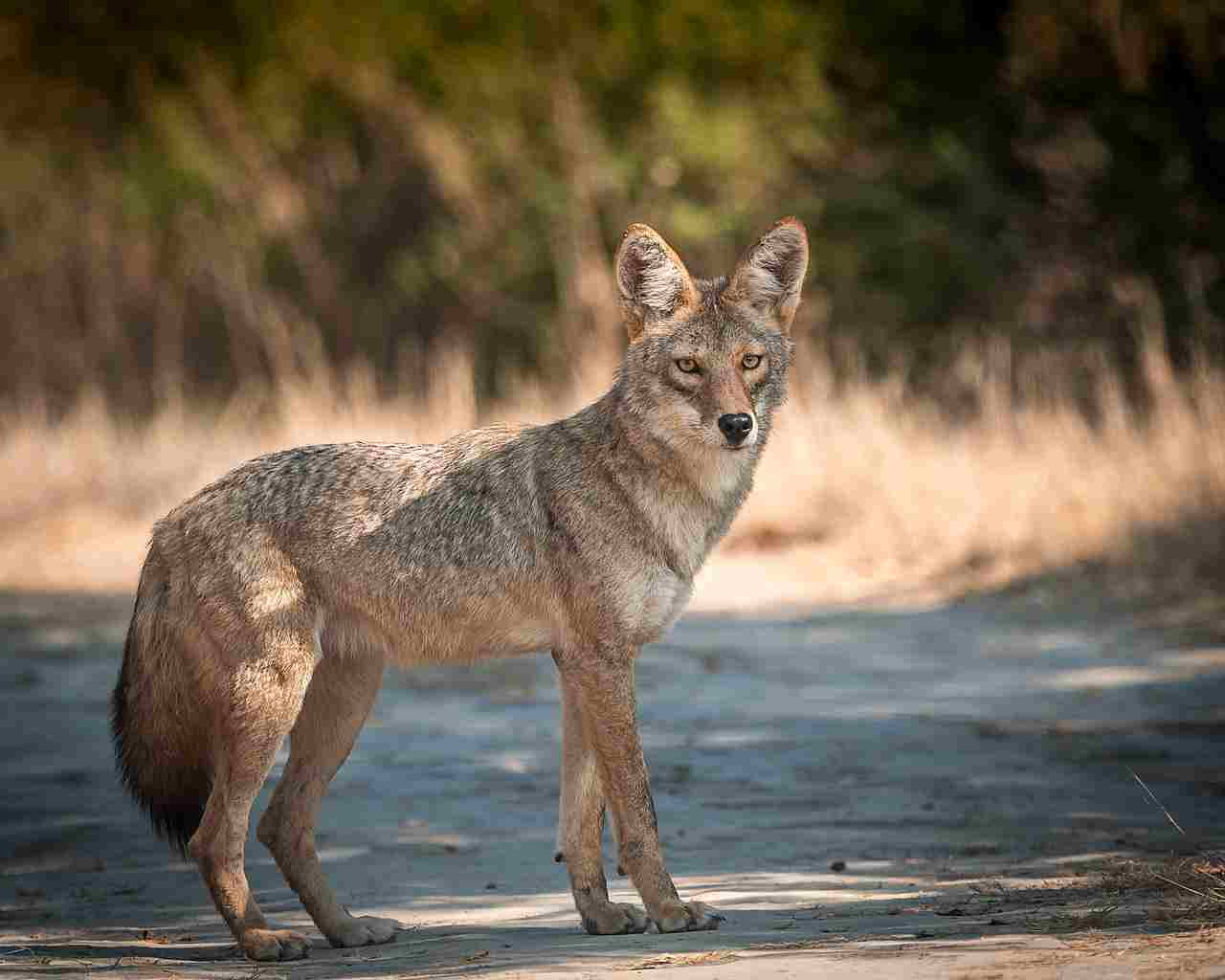
Coyote:
Highly adaptable, found in a range of environments including forests, deserts, and urban areas
Dingo:
Native to Australia, inhabits diverse landscapes such as grasslands, deserts, and forests
Comparison:
While both species show adaptability, coyotes are known for their ability to thrive in urban environments, whereas dingoes are endemic to Australia’s varied ecosystems.
Ecological Implications:
Adaptability and habitat preferences influence the species’ ecological roles, impacting local biodiversity and ecosystem dynamics.
12. Tracks:
Coyote:
Tracks show four toes with claw marks, more oval-shaped
Stride length between 10-16 inches (25-41 cm)
Dingo:
Similar four-toed tracks, but broader and more robust
Stride length varies, generally wider than coyotes
Comparison:
Both leave distinctive tracks, but dingoes typically have broader prints compared to the more slender coyote tracks.
13. Lifespan:
Coyote:
Typically 10-14 years in the wild
Dingo:
Estimated lifespan ranges from 4 to 14 years in the wild
Comparison:
Both species have relatively similar lifespans in the wild, influenced by factors such as predation, food availability, and environmental conditions.
14. Mode of Feeding:
Coyote:
Omnivorous diet, including small mammals, birds, fruits, and insects
Opportunistic scavenging on carrion
Dingo:
Predominantly carnivorous, feeding on small to medium-sized prey
Also consumes fruits, insects, and scavenges when necessary
Comparison:
While both are carnivores, coyotes are more opportunistic in their diet, incorporating a wider range of food sources compared to the predominantly carnivorous dingoes.
Ecological Implications:
Tracks and feeding habits contribute to the ecological understanding of these species, impacting the monitoring and conservation efforts in their respective habitats.
15. Social Behavior:
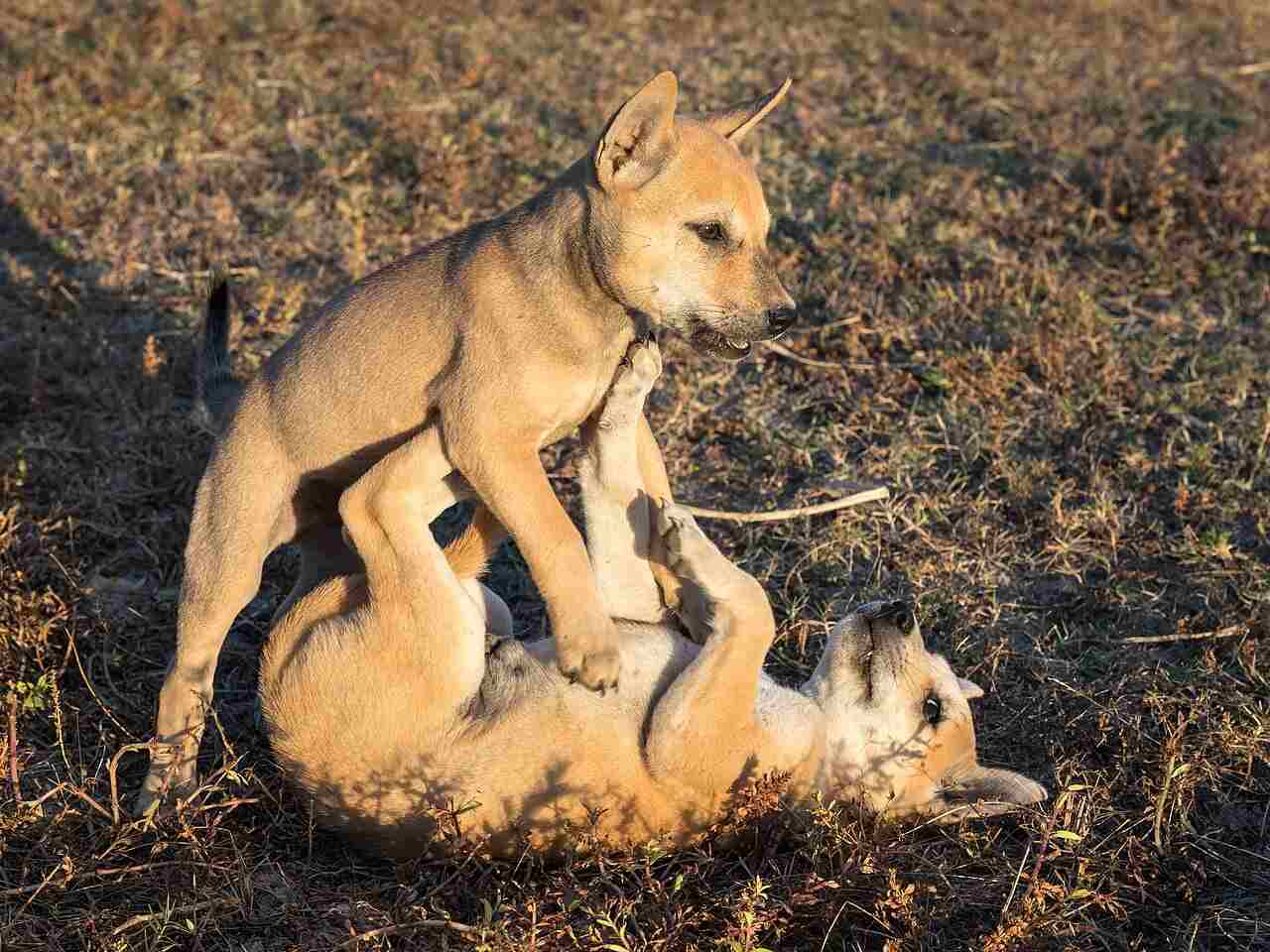
Coyote:
Displays both solitary and social behaviors
Often forms family groups or packs, especially during the breeding season
Dingo:
Primarily exhibits pack-based social structures
Cooperative hunting and territorial behaviors within packs
Comparison:
While both can exhibit solitary behavior, dingoes are more consistently pack-oriented, emphasizing cooperative strategies in hunting and territorial defense.
16. Mode of Reproduction:
Coyote:
Breeding season typically in late winter
Gestation period around 60-63 days
Dingo:
Breeding season varies, influenced by environmental factors
Gestation period around 63 days
Comparison:
Similarities exist in the breeding seasons and gestation periods, contributing to the reproductive strategies of both species.
17. Parental Behavior:
Coyote:
Both parents participate in caring for the pups
Pups stay with the parents for several months
Dingo:
Cooperative care from pack members for the offspring
Pups are raised within the pack, contributing to their survival
Comparison:
Both species exhibit cooperative parental care, with pack members involved in the upbringing of the young, ensuring their survival and development.
Ecological Implications:
Social behavior and reproductive strategies impact population dynamics, influencing the distribution and abundance of these species in their ecosystems.
18. Proximity to Human-Inhabited Areas:
Coyote:
Highly adaptable to urban and suburban environments
Often found near human settlements, scavenging for food
Dingo:
Historically avoided human-populated areas
Increasing instances of dingoes adapting to rural and peri-urban zones
Comparison:
Coyotes demonstrate a higher tolerance for proximity to humans and urbanization compared to dingoes.
19. Behavior Toward Humans:
Coyote:
Generally wary of humans but can become habituated in urban settings
Rare incidents of aggression, often associated with habituation
Dingo:
Traditionally shy and avoids human contact
Instances of aggression are rarer, with human-dingo conflicts less common
Comparison:
While both species tend to avoid humans, coyotes may exhibit more habituation and occasional aggression, especially in urban environments.
20. Danger Posed to Humans:
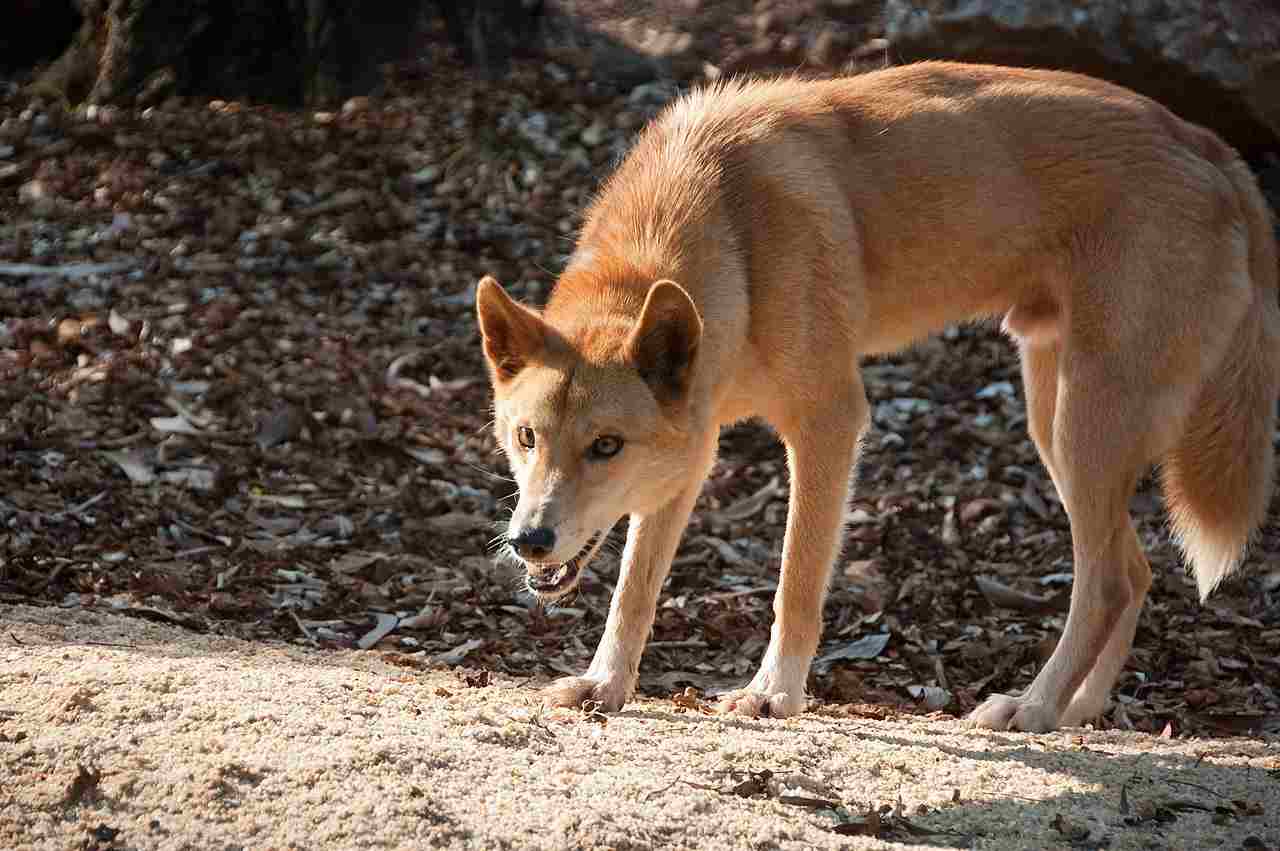
Coyote:
Rarely pose a serious threat to humans
Occasional conflicts arise, often related to habituation or protection of young
Dingo:
Rare instances of aggression toward humans
Generally not considered a significant threat, but caution is advised
Comparison:
Both species have minimal danger to humans, with encounters typically resulting from specific circumstances like habituation, protecting offspring, or scarcity of natural prey.
Ecological Implications:
Human-wildlife interactions and potential conflicts impact conservation efforts and necessitate management strategies to minimize risks for both species and human populations.
21. Associated Precautions:
Coyote:
Encourage responsible waste management to reduce scavenging opportunities
Educate communities on coexisting safely with coyotes
Dingo:
Implement measures to discourage dingoes from approaching human-inhabited areas
Raise awareness about responsible camping practices in dingo-populated regions
Comparison:
Similar precautions focus on minimizing human-wildlife conflicts, emphasizing responsible practices to ensure the safety of both species and humans.
22. Conservation Status:
Coyote:
Least Concern (LC) on the IUCN Red List
Populations widespread and not currently facing significant threats
Dingo:
Varies by region; some populations are considered vulnerable
Concerns include hybridization with domestic dogs and habitat loss
Comparison:
While coyotes are generally abundant and not under significant threat, certain dingo populations face conservation challenges, particularly related to human interactions and habitat changes.
Conclusion
Similarities:
Both species belong to the Canidae family and share common ecological roles as predators.
Exhibit adaptability to a variety of environments and show cooperative social behaviors.
Differences:
Coyotes have a broader distribution, including urban areas, while dingoes are native to Australia.
Dingoes tend to be larger, with a different pack structure and more conservative behavior toward humans compared to coyotes.
